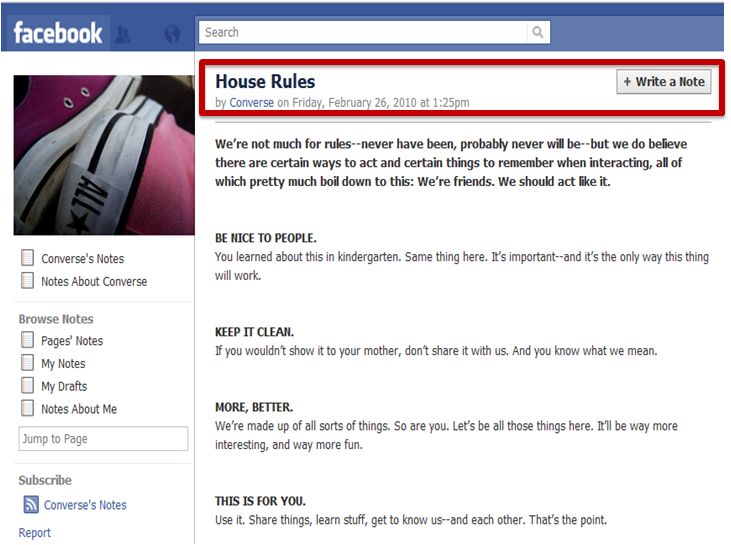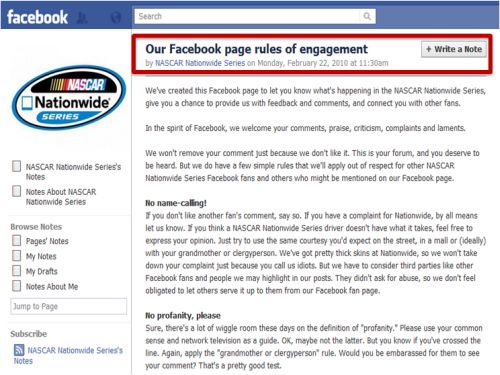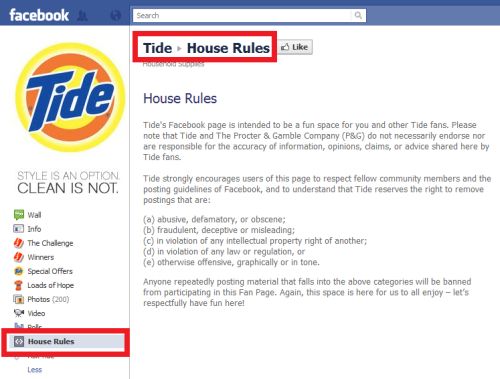 Welcome back, you winsome, worldly, and, let’s face it… possibly war-torn Community Manager, to the ultimate resource made especially for the tougher times on the job: The Community Manager’s Guide To Intra-Community Bloodshed. Last week, we tore open a box of Community Manager Puffs and dug deep for The Community Manager’s Dilemma Decoder Ring— a super useful tool for deciphering between a manageable social media conflict and a more serious, red-level social media crisis.
Welcome back, you winsome, worldly, and, let’s face it… possibly war-torn Community Manager, to the ultimate resource made especially for the tougher times on the job: The Community Manager’s Guide To Intra-Community Bloodshed. Last week, we tore open a box of Community Manager Puffs and dug deep for The Community Manager’s Dilemma Decoder Ring— a super useful tool for deciphering between a manageable social media conflict and a more serious, red-level social media crisis.
This week, we’re tackling ways to prep for potential fracas by establishing a Code of Conduct for your social community as well as a Crisis Protocol for your in-house team. Knowing what’s fair vs. foul, and having a solid plan of attack just in case are two surefire ways to not only lower your blood pressure, but make for smooth sailing in cyberspace. So whether you’re a newbie on the CM social frontier, looking to sharpen your crowd control samurai sword set chops, eager to batten down the hatches before the snot hits the fan, or recently recovering from intra-community bloodshed, saddle up and let’s march onward. This is Cover Your Assets: How To Prepare For Social Community Meltdowns, Facebook edition.
Facebook community member freakouts are like Lady Gaga’s Oscar attire: pretty dang unpredictable. But just because you can’t forecast the keystrokes of a Facebook fan or the reaction to an inquisitive FB poll doesn’t mean you can’t be prepared for the worst. One of the best ways to arm yourself against unruly UGC on your brand’s Facebook Wall is to set the record straight before shiitake even goes down.
Cover Your Bases: Establish A Code of Conduct
Get together with your crew (keep the C-suite in the loop, if one even exists). Brainstorm, compile, and publish an approved code of conduct for all your FB community to see. Include all of none of the following: expectations, invitations, words of encouragement, clarification, caution, disclaimers, etc. There’s no cookie-cutter template here. Pick and choose the elements you want to comprise your code of conduct, make sure that they reflect your brand in form and content, craft them to speak to your community.
Ideas & Tips for Crafting Effective House Rules:
-
- Welcome visitors. Introduce them to your space. Encourage participation. Then, lay down the law.
- State your position. What’s cool? What’s not? Clearly distinguish between what your brand regards as an expression of opinion and downright disrespect.
- Be colloquial, to an extent. Assume that 99.9% of your fan-base won’t [want to] read yet another Terms of Service rife with legal language.
- Be thorough. This is your Facebook Page, your space, your turf – cherish and capitalize this golden opportunity to showcase an end-to-end C.Y.A. (cover your… assets). A tip here is simply: if you intend to be super-mega-big-kahuna thorough, aim to make the content easily digestible and, dare I say, fun to read. One perk / takeaway / goal of this exercise is to have a place you can point penalized persons towards and say, with confidence, “We warned you.” And on that note…
- Make them easy-to-find. A simple Google search for “Facebook House Rules” returns links to FB Notes published by Converse, NASCAR, and the like. (Not to mention, a FB page for The Cider House Rules. *dabs at corners of eyes*.) Terrific! Way to go, brands! Puttin’ their Facebook Community House Rules out there for all to see. Thing is… Facebook Notes, on a Facebook Page, don’t necessarily jump off the screen, and can become quickly and easily buried by fresh, daily content. Compare this to Tide’s approach. With a FB tab dedicated exclusively to House Rules, they have a concrete, easily found, fixed home for their C.Y.A. goodies.
Now that you have your Code of Conduct set in place (conceptually…), it’s time to prep for what to do if when someone breaks the law.
Questions to Ask When Establishing Community Crisis Protocol
Later in this series, we’ll hop in the trenches armed with the Community Manager’s Crisis Playbook, detailing sample social apocalypse-style events and specific tips for how to deal. This section is more of a “How Can I Be Ready?” and less of “What Do I Do,” which will follow.
- Are they on call 24/7? Nights, weekends, holidays? Or do they tune out at the close of a work day and resume in the AM?
- If we expect them to be on-call 24/7, do they have proper technology to always be connected? A smartphone? Wi-Fi at home? Do we compensate for these items?
- Do we engage after hours? Or merely take note of and document an icky wall post, comment thread, or brand mention?
2) The Seal of Approval. When things get messy, immediate action does not always mean immediate engagement with the assailant. Still, it’s ideal to act as soon as possible, once you’ve got your ducks in a row. Before moving forward, best bet is to have buy-in from… who now? Make sure you know whose seal of approval you get before reaching out on behalf of the brand. Consider the following, in the face of a negative event:
- Who do we alert? Consider making a document akin to a “Snow Day” phone tree. Know who needs to know first, and how high up the chain the news should travel.
- Who gives the green light? The president? Head of human resources? Department/team/project leader? Have a clear, unified understanding of who’s approval you need as you move forward.
- In-House vs. Agency. This can be another grey area. If you’re an in-house CM, you’ll follow a similar process outlined in that last bullet point. If you work for an agency doing CM for a client, odds are you need to go a step beyond to get buy-in from your client contact in addition to or instead of your own prez/VP/team leader.
- Do we have unified, concise key messages in the face of certain types of conflicts or crises, pre-approved by the green-light givers? What are the messages? Who knows them? Who can share them? Are they written and archived anywhere for easy retrieval?
3) Method of Outreach. Online, offline, public, private, by email, phone, carrier pigeon, smoke signal? Iron out your method of outreach before you jump in. It will make for considerably smoother sailing. Q’s to mull over:
- When do we take things offline? Do we try to resolve publicly for all the world to see, or hop into email ASAP?
- Do we stay offline? Or return with a statement of resolution… for all the world to see?
- Do we have a dedicated customer service email address? Who checks it? (Refer back to “Who’s At The Helm?” for more on this.) Is it publicly available along with other contact info?
—
This far from a complete brainstorm list, but we hope the questions, concepts & suggestions explored in this post have helped jump-start the Community Manager regions of your brain. Next week, we’ll explore arguments for and against deleting comments & banning fans. Keep this post in your back pocket – it will make the muddled-grey area of deleting & banning much less controversial.











